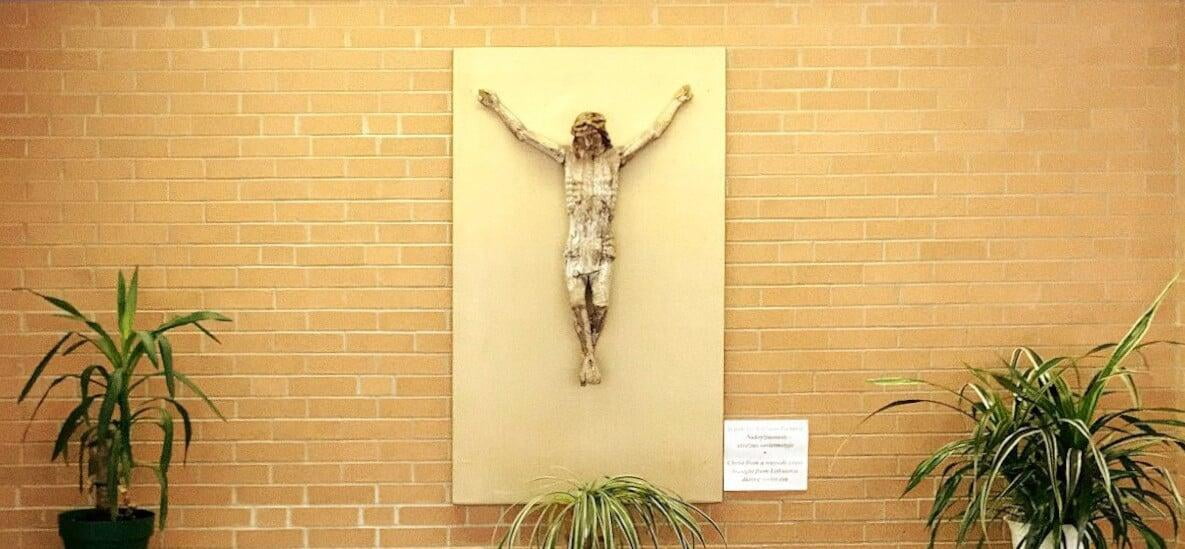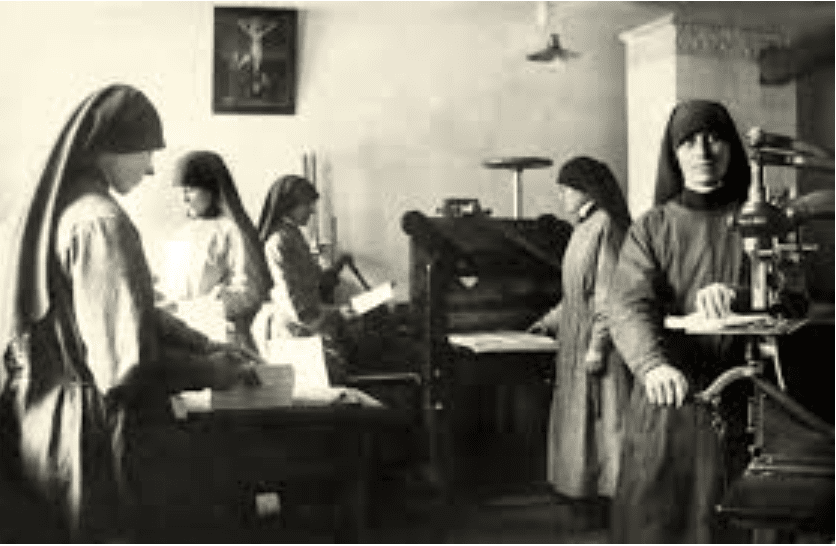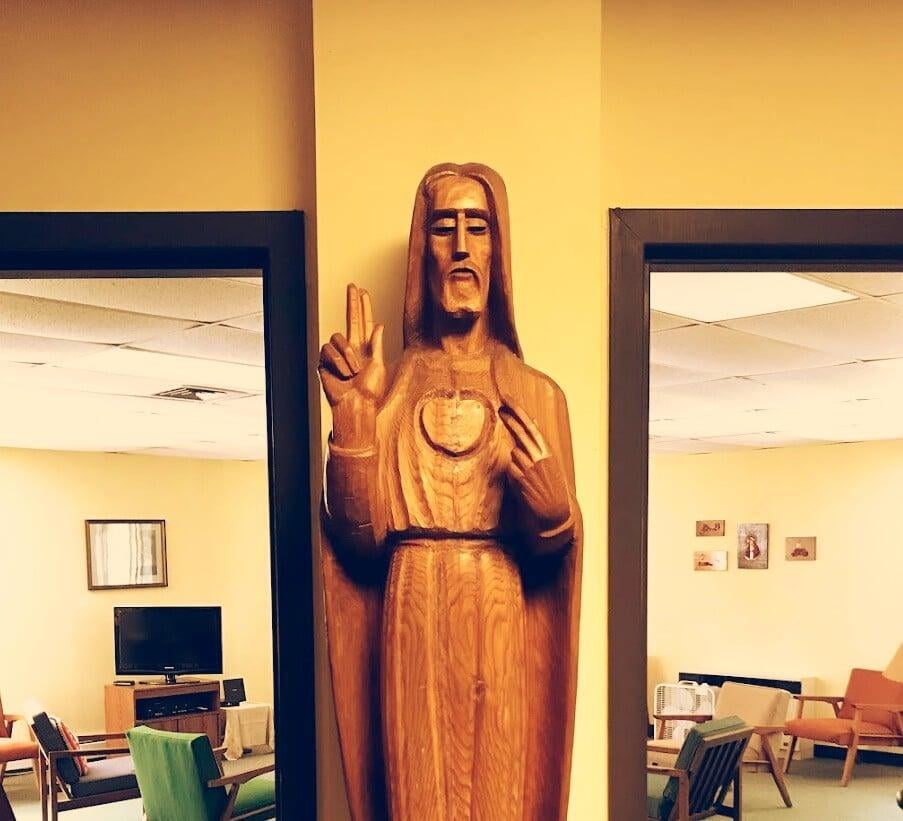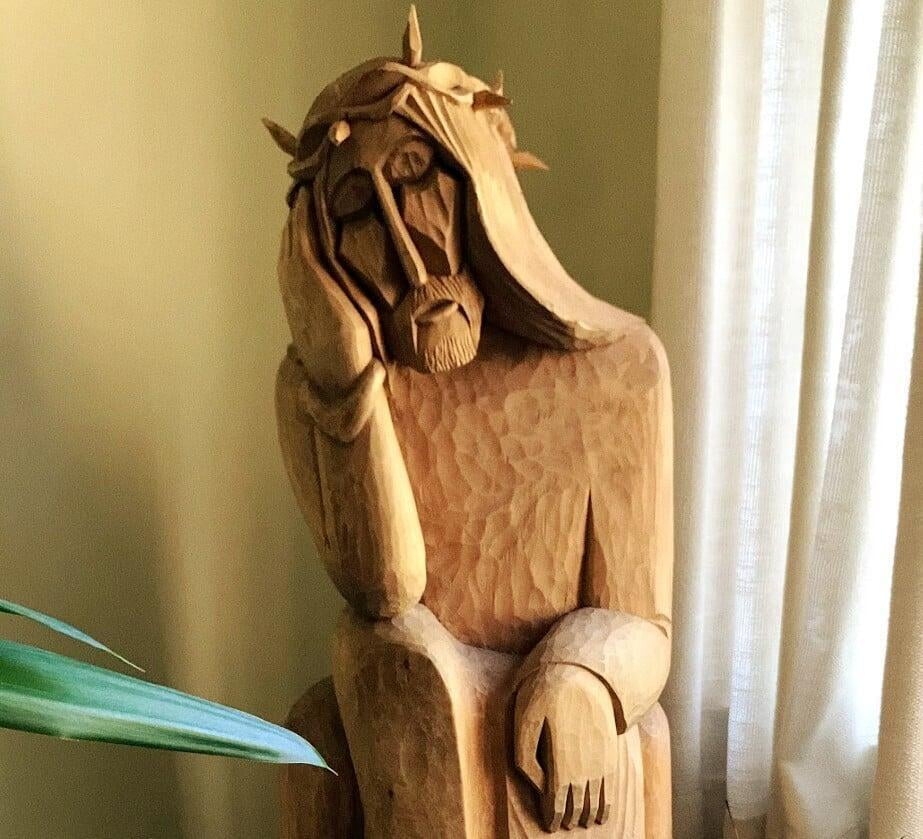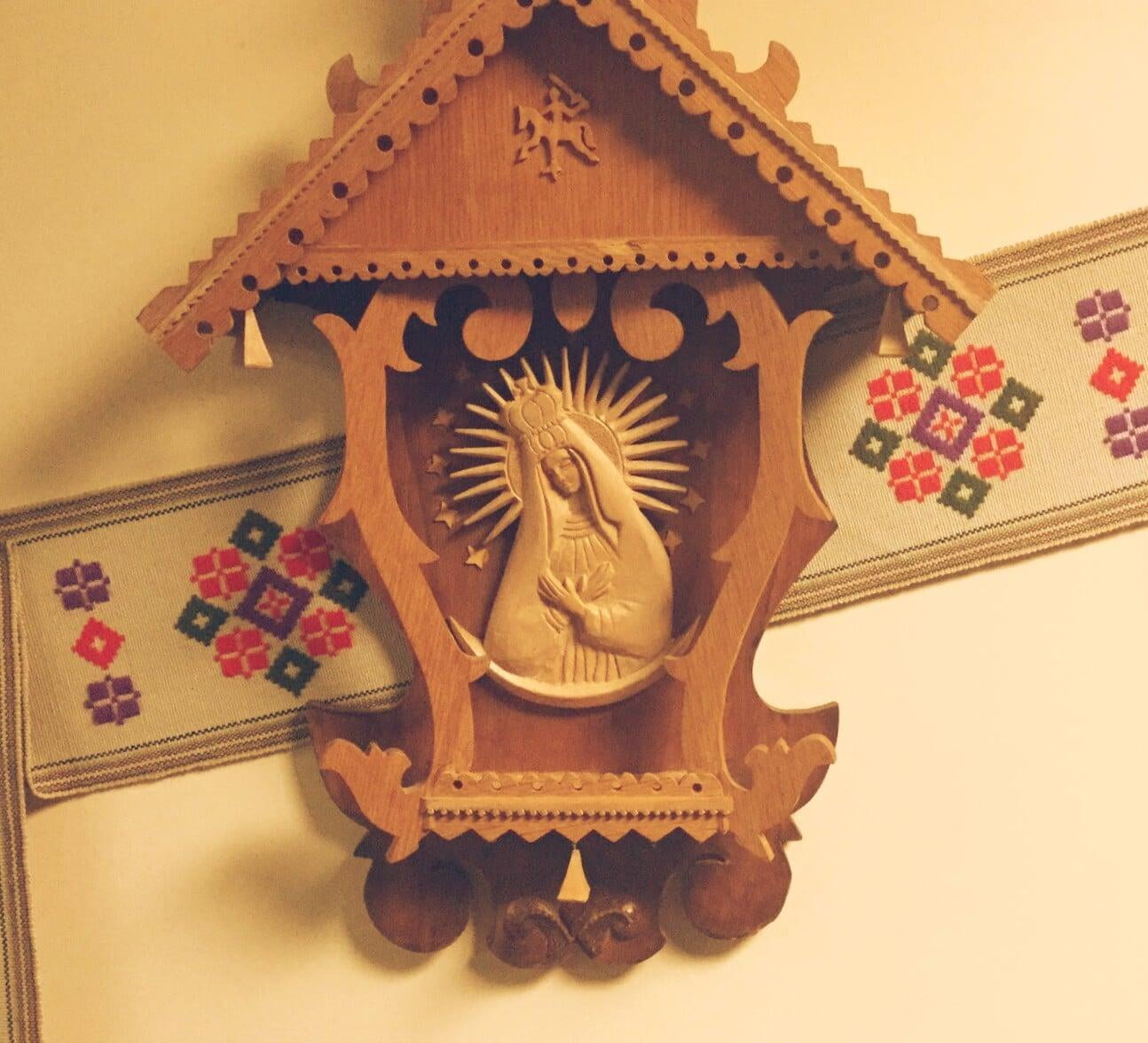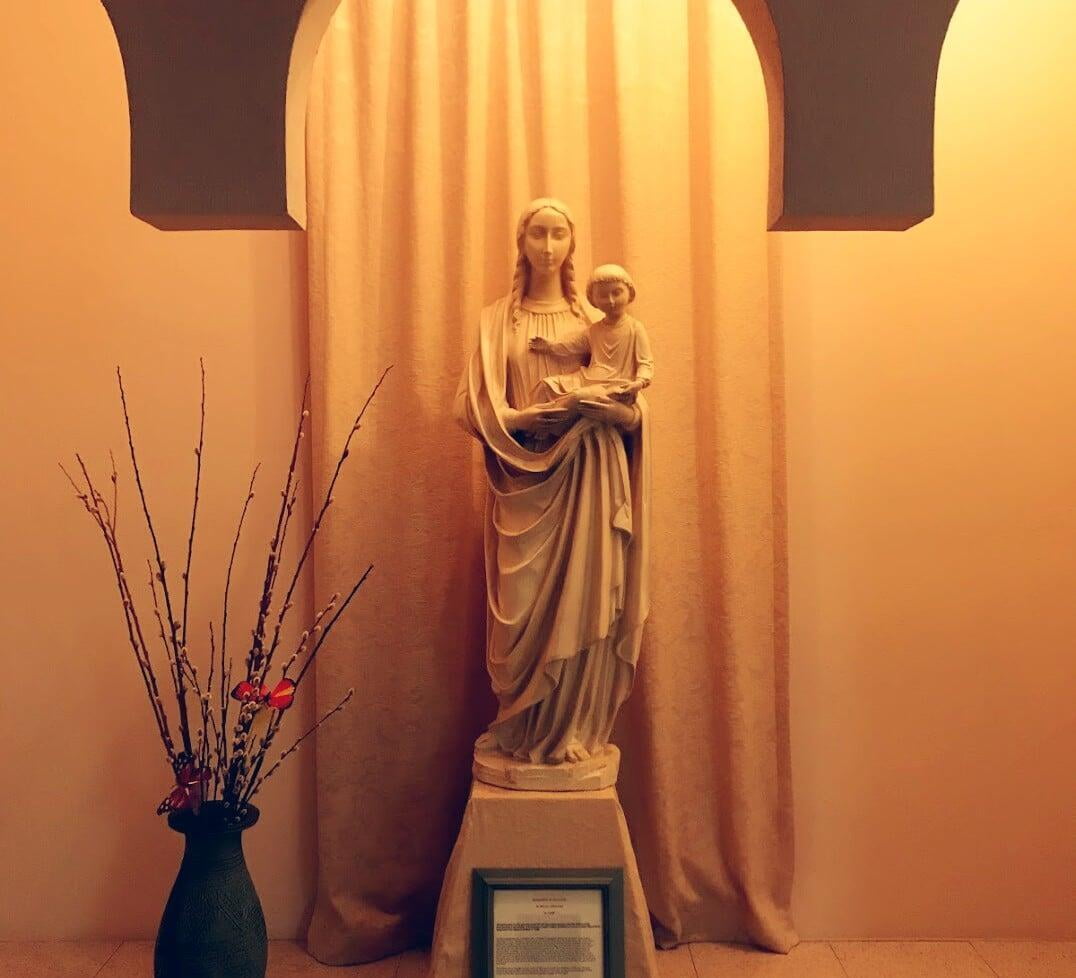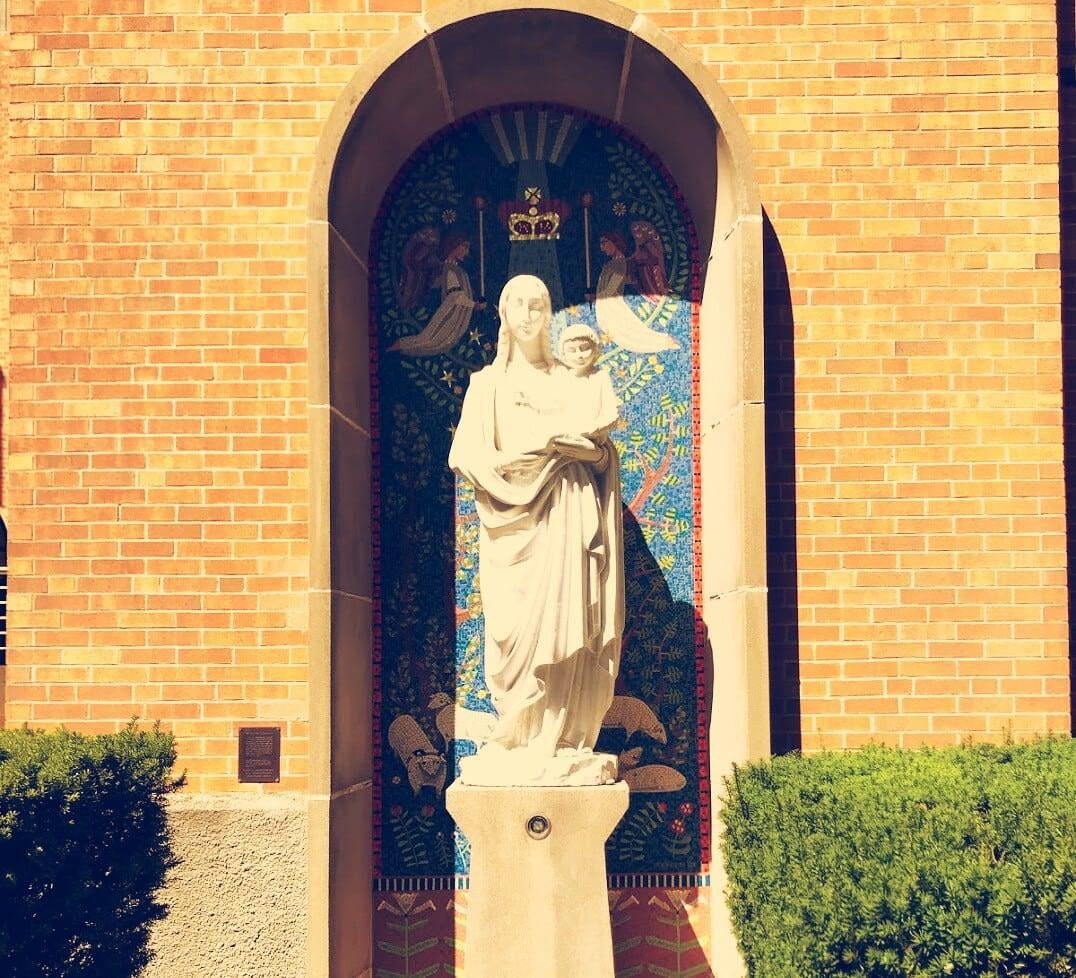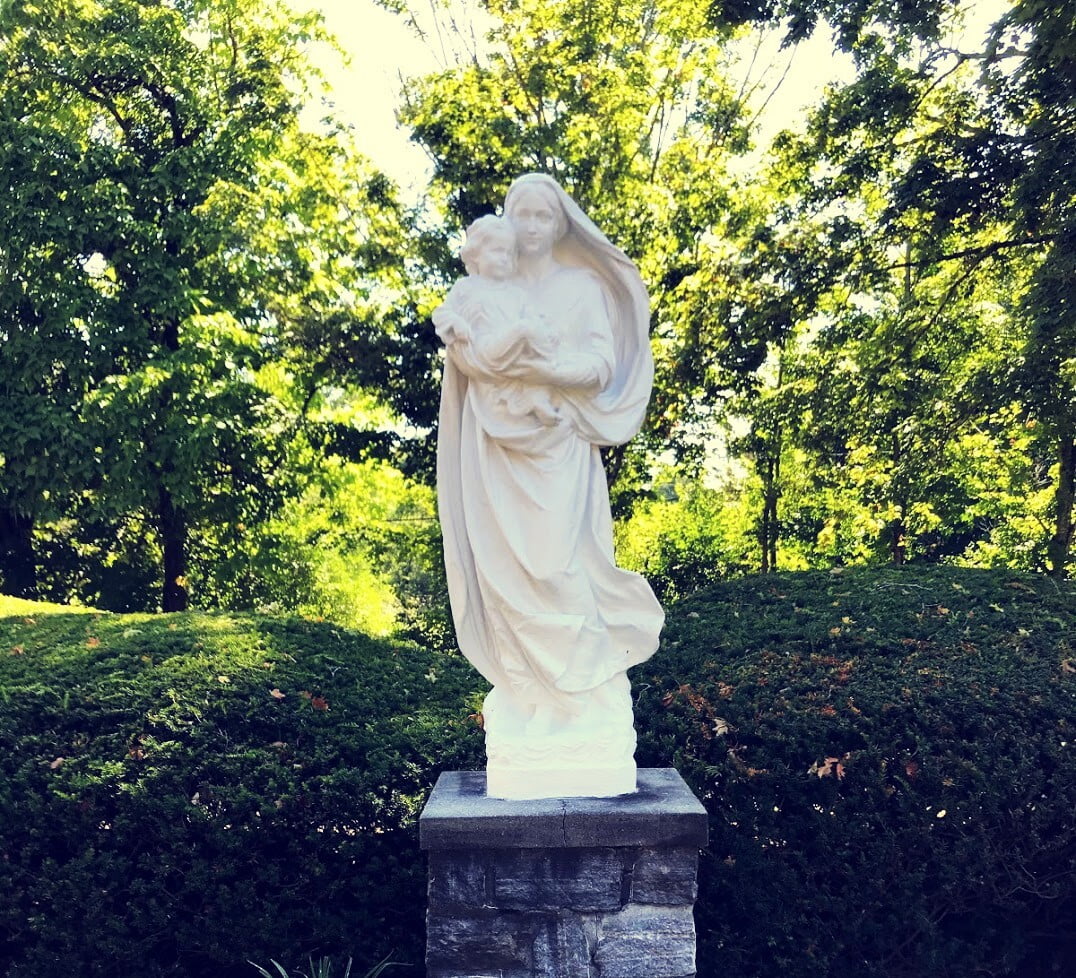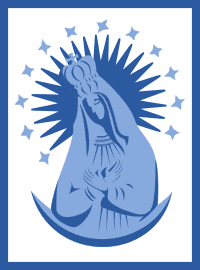The Sisters of the Immaculate Conception
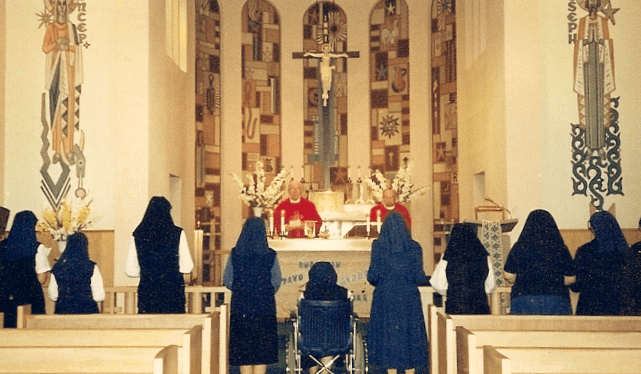
Blessed Archbishop George Matulaitis

“Overcome evil with good”
During one of his trips to his home town Marijampole (Lithuania), he met with the last surviving member of the Marian Congregation to confide in him his desire to be a Marian and informed him of his plan to request permission to make vows without the usual formation. When Rome granted the permission, to avert attention because the Czarist government forbade accepting new members, Matulaitis made religious vows in a private and secret ceremony. Thus, unbeknownst to anyone, Matulaitis became a Marian alongside the last remaining member.
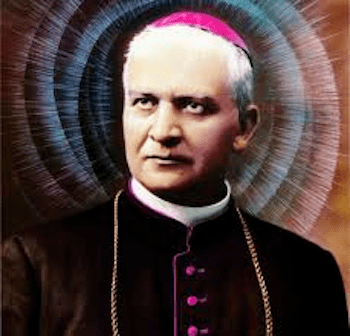
Logo: Our Lady of Mercy
The origin, importance and meaning of the of Immaculate Conception Center logo is derived from Our Lady of Mercy - Our Lady of the Gate of Dawn.
VILNIUS, a medieval city, is considered one of the most well preserved old historic cities in Europe. The Gate of Dawn still serves as a passage way in and out of the old city. This gate is the only remaining part of the medieval wall built 1503 and 1522 as a defensive structure. In the 19th century the Russian government ordered it to be torn down, except for the Gate of Dawn.
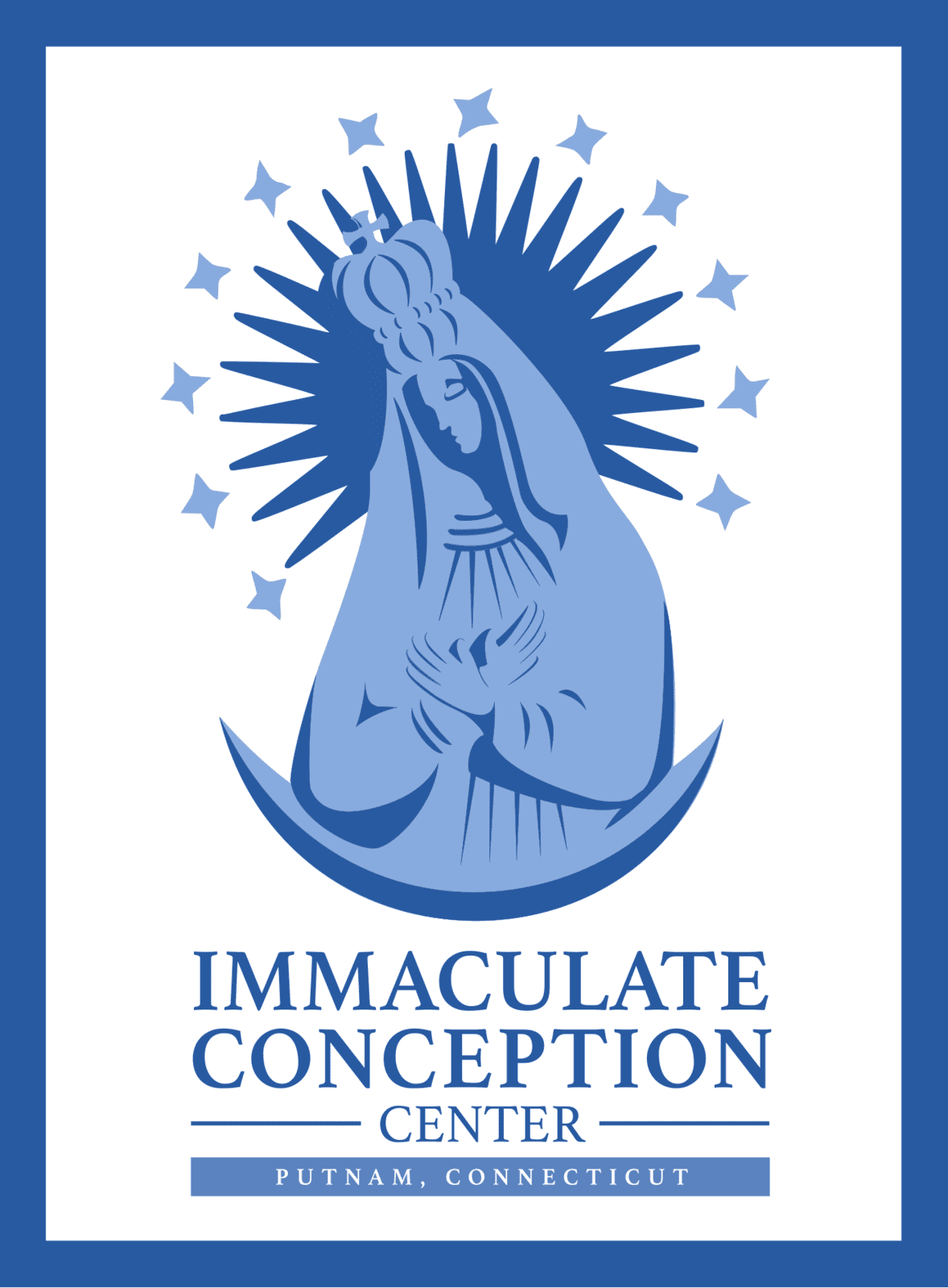
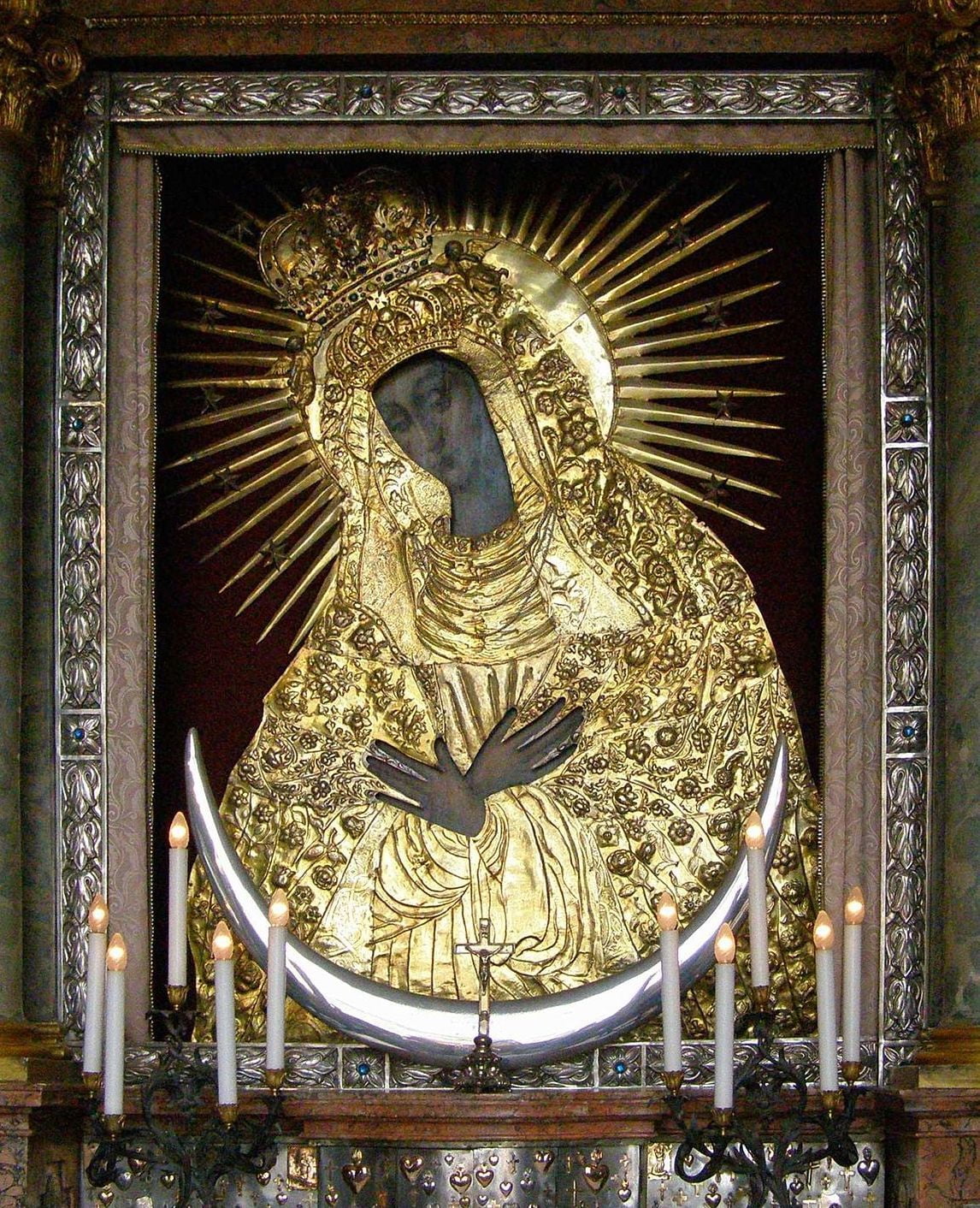
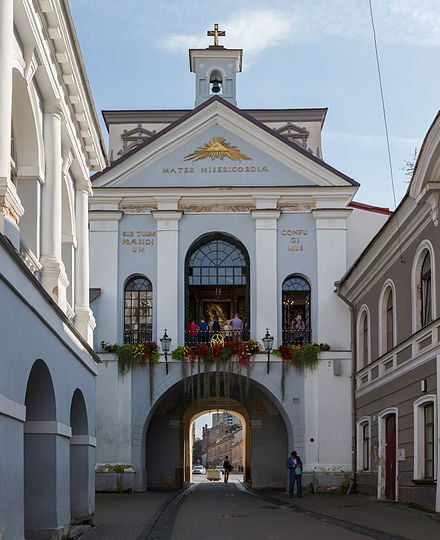
City gates often contained religious artifacts intended to guard the city and to bless travelers. In the arch above the gate facing east (hence the name “Gate of Dawn“) is a chapel which contains the famous icon of Mary, "Our Lady of Mercy“ or "Our Lady of the Gate of Dawn“. For centuries this icon of Mary has been one of the symbols of the city and an object of veneration for both Roman Catholic and Orthodox faithful of Lithuania, Poland and Belarus.
The painting depicts the purity, the surrender, the immaculate conception of Mary. One is immediately drawn towards devotion and recourse to her. Her head is gently leaning to her right, her eyes are half closed, her hands are crossed in devotion; Mary, virgin, humble servant of the Lord, merciful mother and patron of the people.
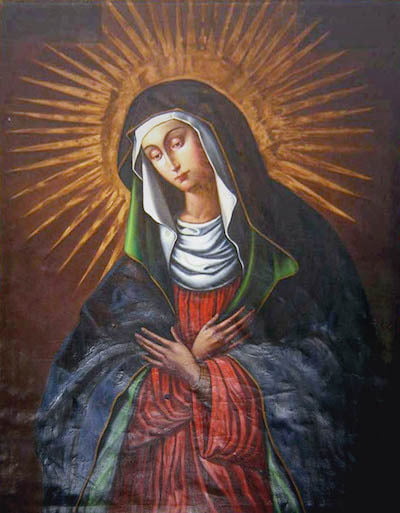
The tradition to cover paintings with revetment (metal covering protecting an icon) of precious metals is borrowed from Eastern Orthodoxy. Mary‘s head is surrounded by an aureola with golden rays and her body is covered in elaborate gold and silver clothes and crowns; these are the symbols of her divine and majestic role as the Queen of Heaven. The clothing of Our Lady is composed of three gilded silver parts, each completed by different artists at a different period. The head and shoulders were covered in 1670–90; the chest piece was adapted from a different painting in 1695–1700; the bottom of the painting was completed by the 1730s.
A Latin inscription “Mater Misericordiae, sub Tuum Praesidium confugimus”- Mother of Mercy, we fly to your protection“ appeared on the facade approximately at the time it acquired its present form in 1715.
In 1927, two crowns made of pure gold which was donated by the people, were blessed by Pope Pius XI and canonically crowned on 2 July. The painting received the title Mother of Mercy. However, during World War II, the gold crowns were lost.
The shrine has since become important in the development of the Divine Mercy devotion. It was here at the Gate of Dawn chapel, that the Divine Mercy image painted under the direction of St. Faustina by Eugeniusz Kazimierowski, was first exhibited during the Holy Week triduum in 1935.

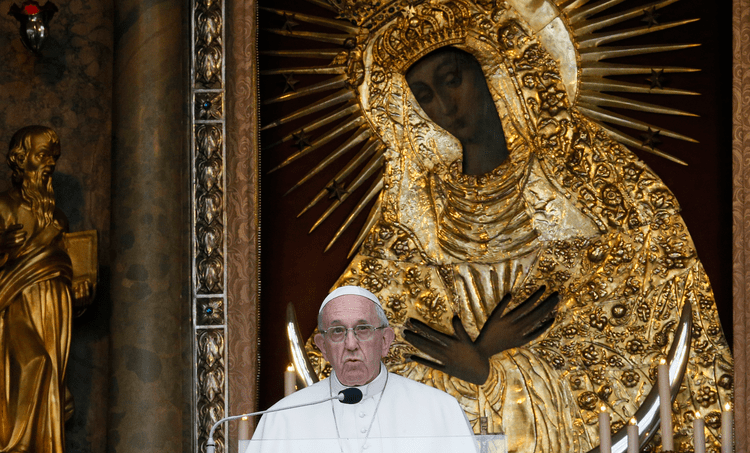
Our Lady of Šiluva
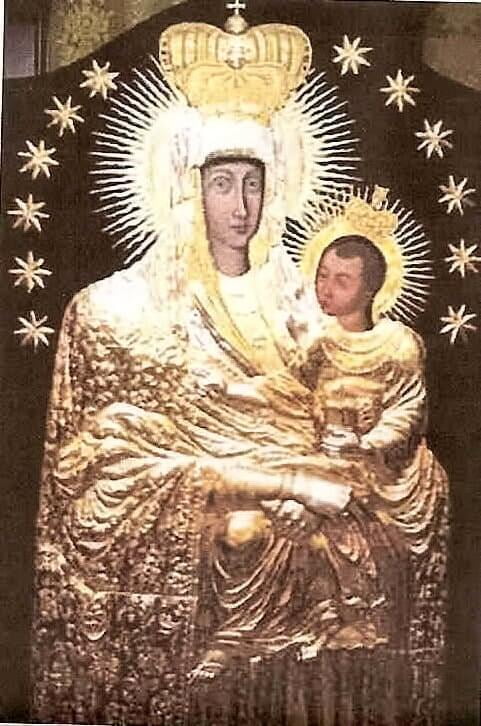
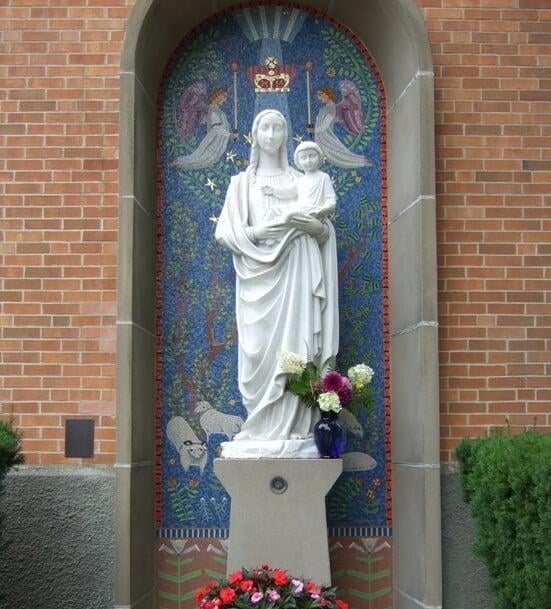
Artwork
